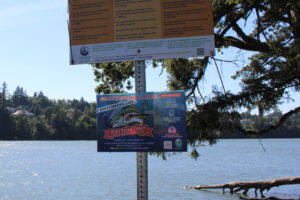During a time of extreme partisanship, U.S. Rep. Marie Gluesenkamp Perez wants to work on a problem that seems to unite most Americans in disdain: overly bright headlights.
“This is something that draws ire from rural Americans, from older Americans, from law enforcement,” Perez, D-Skamania, told the House Transportation and Infrastructure Committee on May 21.
Headlights with a soft yellowish glow are being edged out by harsh bluish-white beams. That’s because modern cars are increasingly equipped with LED and high-intensity discharge bulbs, which produce wider, stronger and crisper beams.
Brighter headlights can make seeing nighttime hazards, such as wandering animals, easier, Washington State Patrol Capt. Deion Glover said. But if they’re blinding another driver, that can be a safety issue, he said.
He said he hears his fair share of headlight-brightness complaints, but there’s not much he can do.





